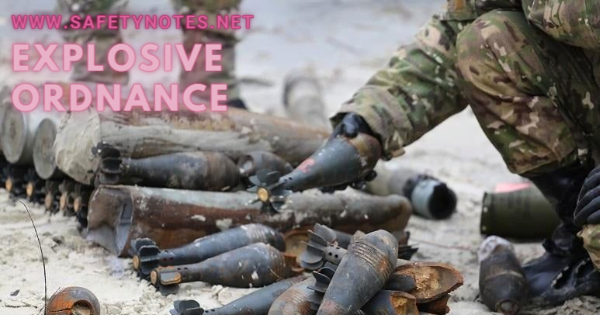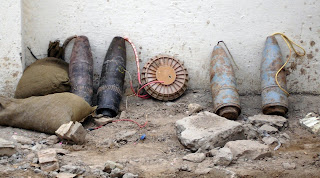
Hello everyone! Welcome to today’s Toolbox Talks session. Our topic for today is Explosive Ordnance. It’s crucial to always be aware of the potential presence of explosive ordnance in our work areas. Let’s dive into the details and learn how to ensure our safety when dealing with such dangerous items.
Types of Explosive Ordnance
Explosive ordnance can come in various forms. Some common types include grenades, rocket propelled grenades (RPG), mortars, shells, mines, allied sub-ordnance, rockeyes, and bombs. It’s important to be familiar with these types so that we can identify them if we come across them in our work areas.
The Biggest Danger: Allied Sub-Ordnance
Among all the types mentioned, one of the biggest dangers lies in allied sub-ordnance. These are explosive devices that did not explode on impact or have been damaged. Under no circumstances should you ever touch allied sub-ordnance. Even if it appears harmless, it can still pose a significant threat. Always remember: when it comes to explosive ordnance, it’s better to be safe than sorry.
Certified “Cleared” Areas
As part of our safety protocols, we must never enter any areas that are not certified as “Cleared.” If you are unsure about the status of an area, immediately contact your supervisor. They will then get in touch with the Safety Division to verify if the area is safe for entry. It’s essential to prioritize caution and seek proper clearance before entering any potentially hazardous zones.
Bunkers and Weapon Pits
Bunkers and weapon pits can be areas of concern when it comes to explosive ordnance. These areas may contain hidden grenades or booby traps, posing serious risks to anyone who enters without proper authorization. Therefore, it is absolutely crucial that you refrain from entering bunkers or weapon pits unless you have received explicit permission and have been trained to handle such situations.
Driving Safety
For those of you who are responsible for driving within the work area, it is essential to adhere to specific safety guidelines. Never leave the black top road, unless you are on cleared sand roads. The hard shoulder may contain unexploded sub-ordnance, so it’s important to stay on designated routes. By following these instructions, you can minimize the risk of encountering explosive ordnance while driving.
Souvenirs and Suspicious Objects
While it may be tempting to collect souvenirs such as bullets or shells, it is strictly prohibited. These items can potentially be dangerous, and mishandling them may lead to severe consequences. If you come across anything that looks suspicious or unfamiliar, remember to leave it alone and immediately report it to your supervisor. It’s always better to err on the side of caution and let the experts handle the situation.
Conclusion
In conclusion, our safety when dealing with explosive ordnance should always be a top priority. We covered various aspects, including the different types of explosive ordnance, the dangers associated with allied sub-ordnance, the importance of certified “Cleared” areas, avoiding bunkers and weapon pits, driving safely, and refraining from collecting souvenirs. By following these guidelines, we can significantly reduce the risks and ensure a safer work environment for everyone.
FAQs (Frequently Asked Questions)
1. Can I touch a grenade if it looks damaged? No, absolutely not. You should never touch any explosive ordnance, especially if it appears damaged. Even the slightest disturbance can trigger a catastrophic event.
2. How can I identify an area that is certified “Cleared”? Areas that are certified “Cleared” will have official documentation or signs indicating their safety status. If you are unsure, always consult your supervisor or contact the Safety Division.
3. Are there any specific precautions I should take while driving within the work area? Yes, when driving, stick to the black top road and avoid leaving it unless you are on cleared sand roads. The hard shoulder may contain unexploded sub-ordnance, so it’s essential to follow the designated routes.
4. Can I collect bullets or shells as souvenirs if they are not explosive? No, it’s not recommended. Bullets and shells, even if they are not currently explosive, can still be potentially dangerous. It’s best to leave them alone and report any findings to your supervisor.
5. What should I do if I encounter something suspicious that I’m not sure about? If you come across anything that looks suspicious or unfamiliar, the safest course of action is to leave it alone and immediately inform your supervisor. They will then take the necessary steps to ensure everyone’s safety.
Remember, safety is everyone’s responsibility, and we must all do our part to create a secure working environment. Stay vigilant, report any concerns, and prioritize your well-being and the well-being of your colleagues. Thank you for your attention, and let’s all stay safe out there!

